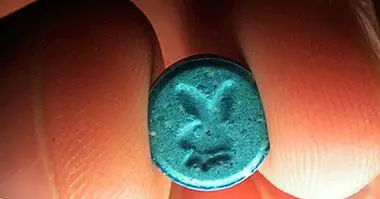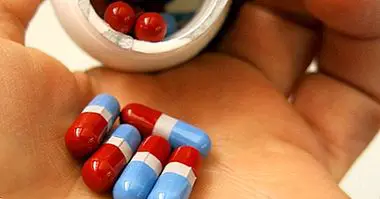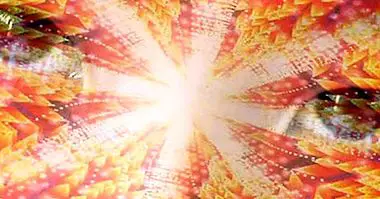Delirium tremens: a severe alcohol withdrawal syndrome
Throughout history, society has assimilated the consumption of alcoholic beverages , becoming a feature of some cultures. It is something that can be observed in parties, concerts and discos, traditions, as part of the leisure habits of youth and even in the popularity of phenomena such as large bottles.
However, it must be borne in mind that the consumption of alcohol can generate addiction, the drinker losing control of the intake, which leads to dependence on the substance. And this dependence is not expressed only through the abuse of the substance, but also through signs and symptoms that appear when you stop drinking alcohol. Among the most serious phenomena of abstinence from alcohol is delirium tremens . Let's see what it consists of.
The mechanics of abstinence
Once a dependency has been generated, the fact of removing the object to which one is dependent causes withdrawal syndrome , that is, the absence of the substance in the body causes symptomatic reactions. That is why in many cases ending alcoholism is not as simple as removing the possibility of consuming these types of drinks once and for all. The lack of this substance also produces a series of symptoms that, sometimes, can be dangerous by themselves.
The opposite effect to the one produced by the substance usually occurs, which means that in the case of a depressant substance (such as alcohol) there will be manic symptoms, whereas in the case of the excitants the withdrawal syndrome will consist of a lowering of the general activity of the organism. In any case, the withdrawal of the desired substance must be controlled , because a too abrupt cessation of the supply can cause these syndromes.
Within the abstinence syndromes related to alcohol abuse, the one considered to be the most serious is the so-called delirium tremens.
What is delirium tremens?
It is called delirium tremens at Acute confusion caused by alcohol deprivation . It is caused by the interruption of alcohol intake in chronic drinkers who have developed a physical dependence, and frequently appears after between 4 and 72 hours of abstinence.
Although delirium tremens usually occurs in patients who stop drinking after excessive consumption of alcohol, it is possible to find cases in which this syndrome has been caused by diseases, injuries or infections in individuals with high alcohol consumption in the past.
The symptoms of delirium tremens
The main symptoms of this syndrome are a disintegration of consciousness in which visual hallucinations, delusions, emotional lability and stupor appear . Tremors, psychomotor agitation and seizures are also frequent.
Generally, delirium tremens has a short duration, but independently of this it is a dangerous syndrome, since 20% of cases are fatal in case of not receiving medical attention, and even with this 5% of cases end at the death of the patient.
Phases of delirium tremens
In a first phase, vegetative symptoms such as anxiety, tachycardia, dizziness, restlessness and insomnia begin to be observed, caused by a rise in norepinephrine in the blood. If you reach the second phase, about 24 hours after its appearance, the intensity of the previous symptoms increase, with uncontrollable tremors and intense sweating . Seizures may also appear.
Finally, in the third phase (defining delirium tremens), there appears a state of disturbance of consciousness called obnubilation. This is defined by the propensity for distractions and confusion, along with a profound disorientation. The most characteristic of this phase is the appearance of visual hallucinations (usually microzoopsies) and delusions, together with a high sense of anguish. Likewise, agitation, tachypnea, hyperthermia and tachycardia also occur.
Possible treatments
Taking into account that delirium tremens is a problem that can cause the death of the patient, immediate hospitalization of those who present the described symptoms is required, and it may be necessary to enter the ICU.
The treatment to be applied will have as basic objectives to keep the patient alive, avoid complications and relieve symptoms. Thus, the surveillance of the affected will be constant, observing its hydroelectric balance and vital signs.
Although the specific measures will depend on the case, the administration of diazepam, lorazepam and dipotassium chloracepate is frequent to achieve sedation of the patient, hydroelectrolytic control in order to maintain the hydration of the patient and administration of vitamins to maintain correct functionality of the organism.Likewise, haloperidol is also commonly used to control the psychotic process and hallucinations .
A final consideration
While excessive consumption of alcohol is a dangerous phenomenon, and those who cease drinking do so for good reasons, it is necessary that those who decide to stop drinking take into account the physical dependence that their body maintains with that substance.
It is essential in cases of addiction or substance use for a long time (including medications such as tranquilizers or antidepressants), that the withdrawal of the substance occurs gradually, since in the initial compasses the body needs a certain dose of the substance to continue functioning properly.
In addition, it should be remembered that the type of health hazards associated with delirium tremens can be avoided detecting cases of alcohol addiction in time , which allows to close the passage in time to alcoholism. The use of this kind of drinks is socially widely accepted and extended in all kinds of contexts, and that is why detecting their first signs can be complicated, given the degree of normalization of the abuse of these substances.
To know some of the signs that indicate the presence of the beginnings of alcoholism, you can read this article: "The 8 signs of alcohol addiction."
Bibliographic references:
- American Psychiatric Association. (2013). Diagnostic and Statistical Manual of Mental Disorders. Fifth edition. DSM-V. Masson, Barcelona.
- Correas, J.; Ramírez, A. & Chinchilla, A. (2003). Manual of Psychiatric Emergencies. Masson
- Ferri, F.F. (2015). Delirium tremens. In: Ferri FF, ed. Ferri's Clinical Advisor. 1st ed. Philadelphia: PA Elsevier Mosby; p. 357
- Golberg, D. & Murray, R. (2002). The Maudsley hanbook of practical psychiatry. Oxford
- Marta, J. (2004). Practical approach to delirium. Masson
- O'Connor, P.G. (2016). Alcohol use disorders. In: Goldman L, Schafer AI, eds. Goldman's Cecil Medicine. 25th ed. Philadelphia, PA: Elsevier Saunders; chap 33.



















